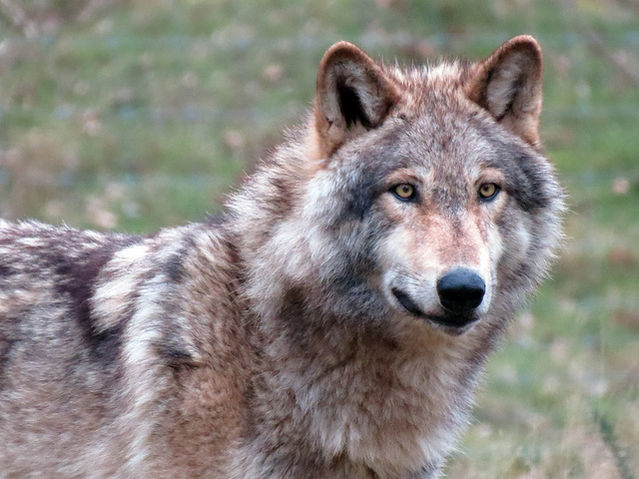Attachment
How Much Wolf Is in Your Dog's Behavior?
Dog breeds that are genetically closer to wolves show less affection for people
Posted December 19, 2016

The remarkable surge in genetic technology has now allowed us to look at dogs and dog breeds in a whole new way. We can not only determine the wild canine ancestral species from which our dogs were domesticated, but we can also determine a timeline which allows us to see how close any given breed is to the ancient primitive wolf from which our dogs evolved. We do this through something which is called a cladogram analysis of dog genes. A cladogram is a sort of evolutionary family tree, with various branches representing breeds of dogs or species of canines.
This kind of analysis shows that there were a number of breeds of dogs that evolved directly from ancient wolves and have remained relatively unchanged since that early separation. These are quite different from our modern breeds of dogs which are products of controlled breeding practices since the Victorian era. If you look at the cladogram below you can see that from the ancient wolf we have a cluster of Asian breeds (the Chinese Shar-Pei, the Shiba Inu, Chow Chow, and the Akita), an African dog (the Basenji), some Spitz derived dogs (the Siberian Husky and Alaskan Malamute), and some dogs of Middle Eastern origin (the Afghan Hound and the Saluki). All of our more modern European and Asian breeds came considerably later and are many branching points away from their ancient wolf ancestor.

Wolves are not dogs, and their temperaments are quite different from a domesticated dog. One of the most important differences has to do with the wolves ability, or rather its inability, to form strong attachments to people. Several studies have shown that even if you hand-rear wolves from early puppyhood, they do not show the same kind of attention seeking and affectionate behavior that domestic breeds of dogs do. Friendliness toward humans is not part of the wolf's genetic makeup. A recent study suggests that the closer a dog breed is genetically to its ancient wolf ancestor, the more wolf-like personality characteristics it has.
The investigative team was headed by Akiko Tonoike, of the Department of Animal Science and Biotechnology at Azabu University in Japan. The data was published in the journal Scientific Reports*. This was a large and ambitious study involving the gathering of questionnaire data from 2,951 dog owners in Japan and 10,389 dog owners in the United States. The questionnaire that was given to the dog owners was the C-BARQ which was developed by James Serpell of the University of Pennsylvania. It is a popular measure that appears to be statistically valid and it measures a variety of different behavioral characteristics including aggression, trainability, as well as affection and attachment. Because of the number of dogs, breeds, and personality dimensions involved, the results are inevitably complicated and are difficult to plow through for the average reader. However our interests are in one specific personality dimension, namely attachment or affection that the dog breed shows for people.
In the C-BARQ attachment is defined by the owner's responses to questions such as the dog's tendency "to follow members of the household from room to room about the house," "to sit close or in contact with a member of the household when that individual is sitting down," "to knowledge, nuzzle, or paw at a member of the household for attention when that individual is sitting down," and "to become agitated when a member of the household shows affection for another person or animal," as examples. Technically these behaviors are called prosocial tendencies.
The researchers found that the attention seeking of these ancient and Spitz breeds is different from the scores of any other breed group associated with modern European origins. Much like tamed wolves, all of these breeds show low attachment and seem to be emotionally indifferent to the humans that they live with.
This actually gives us some interesting information as to the way in which the domestication of dogs and the development of dog breeds might have come about. This is because, despite their low attachment and attention-seeking tendencies, the aggressive or fearful reactions toward humans are relatively low in these older breeds of dogs. So this suggests that domestication of our dogs may have involved a two-stage process, with the first stage involving the selection and breeding of dogs for low aggressive and minimal fearful tendencies. It was only later, in the second stage of domestication, that human beings began to pay attention to prosocial behaviors and began to breed dogs which showed attention seeking and attachment behaviors towards people.
In other words, it is the more modern breeds of dogs that are most likely to be kissy-faced.
Stanley Coren is the author of many books including: Gods, Ghosts and Black Dogs; The Wisdom of Dogs; Do Dogs Dream? Born to Bark; The Modern Dog; Why Do Dogs Have Wet Noses? The Pawprints of History; How Dogs Think; How To Speak Dog; Why We Love the Dogs We Do; What Do Dogs Know? The Intelligence of Dogs; Why Does My Dog Act That Way? Understanding Dogs for Dummies; Sleep Thieves; The Left-hander Syndrome
Copyright SC Psychological Enterprises Ltd. May not be reprinted or reposted without permission
* Data from: Akiko Tonoike, Miho Nagasawa, Kazutaka Mogi, James A. Serpell, Hisashi Ohtsuki & Takefumi Kikusui (2015). Comparison of owner-reported behavioral characteristics among genetically clustered breeds of dog (Canis familiaris). Scientific Reports, 5, 17710; doi: 10.1038/srep17710


